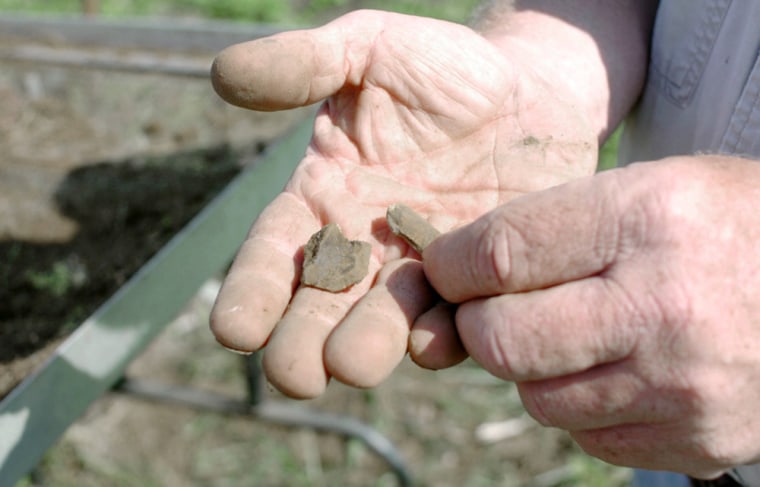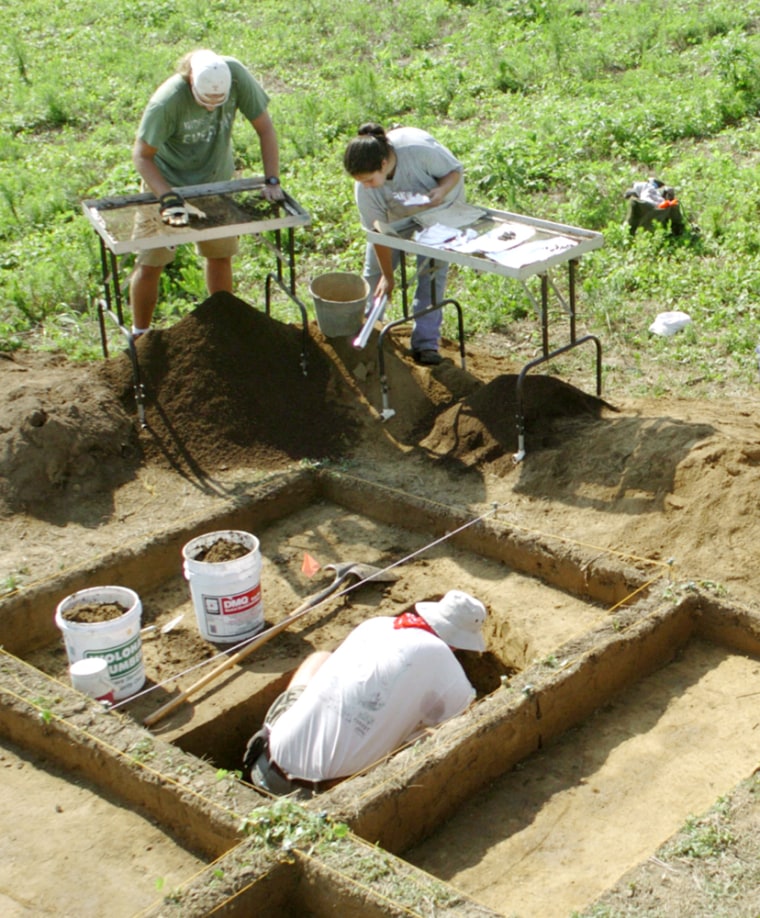Arrowheads that turn up in the mud after a heavy rain are common here, but now archaeologists are digging up broken bits of fine china, parts of military uniforms and even charred firewood, relics of one of the biggest Army camps in the earliest days of the republic that went unnoticed for two centuries.
Known as Cantonment Wilkinson — named after Gen. James Wilkinson, the man who ran it — the camp housed as many as 1,500 soldiers in 1801-1802, about a third of the standing U.S. Army at the time, historians say.
Alexander Hamilton and George Washington had posted them along the Ohio River, a few miles from where it meets the Mississippi, to take the Mississippi River from the Spanish by force if a war ensued.
When it didn't, the camp was abandoned and crumbled into the brown clay — until this summer, when residents led Southern Illinois University archaeologists to the site.
"It's a significant find," said Robert Moore, a historian with the National Park Service in St. Louis and author of a book on explorers Meriwether Lewis and William Clark. Lewis and Clark had noted the abandoned camp when they sailed by in 1803, on their way to their historic expedition.
Traveler Thomas Rodney described it this way that the same year: "There (are) 2 or 3 hundred logged houses in this town, built for our army in regular streets as a post or place of arms."
The dig
In the past few weeks, SIU archaeologists have dug eight rectangular holes into the grassy field, where they believe cellars, trash pits and old latrines stood under rows of log houses.
They've pulled from the soil and clay pieces of broken china, some still painted with dainty orange petals.
They've also bagged and tagged a truckload of rust-encrusted nails, broken bricks and window glass, as well as what looks like a boot heel, said archaeologist Mark Wager of SIU's Center for Archaeological Investigations, who heads the project.
"Someone described it as the only time-travel device we have," archaeologist Jon Pressley said as he scraped topsoil from a bathtub-sized trench, handing it to others to sift through metal trays for any bits of history.

The dirt walls around him show streaks of black, where wood from long-ago trash fires burned, preserved in the hard clay for the past 200 years.
The arrowheads that have been found were made by Cherokee who inhabited the camp after the soldiers left.
The field went unnoticed by archeologists for so long because people were looking for the wrong relics, Wager said. Because the camp wasn't a fort, it didn't have the kind of heavy artillery that can be easily excavated generations later, such as the artifacts found upriver a few miles at Fort Massac.
Instead, soldiers simply lived and trained in "Wilkinsonville," as it was known, in preparation for fighting elsewhere, he said. Instead of leaving cannons, they left a light scattering of household items from daily life.
"These might seem small and insignificant, but they tell us the story of how these men lived here in the frontier," Wager said, rubbing the mud off a fingertip-sized piece of floral china. The finery was likely shipped there for officers use, he said.
The digging is now done for the summer, and Wager hopes the Illinois Historic Preservation Agency and the Library of Congress will continue to fund the project so he can return with his team next year. He's received about $60,000 for it so far.
He hopes no one will loot the site in the meantime. Collectors have visited the area, metal-detectors in hand, searching for the site, Wager said. He agreed to speak to The Associated Press about the project on the condition its precise location not be specified.
For Chrystal Parker, all that's important is the area's local history is finally being unearthed. Parker lives near the dig, and says her family often discussed the field over the dinner table.
"They always said if you could get down there after a good rain, there would be arrowheads to find," said Parker, 43, standing on her sweeping verandah overlooking the Ohio. "We just never thought it was anything big like this."
